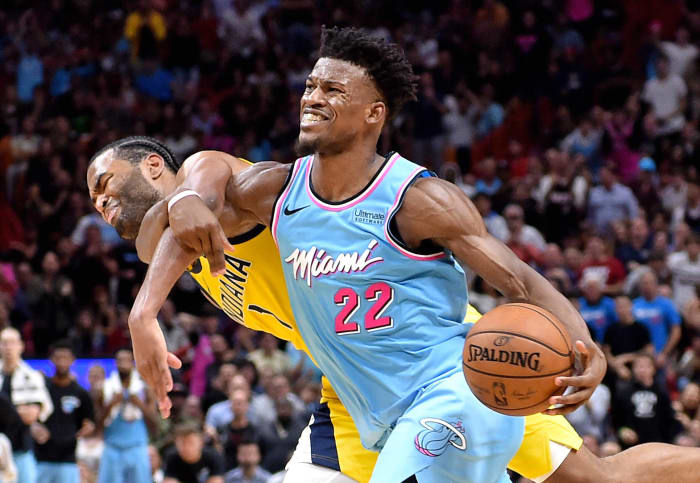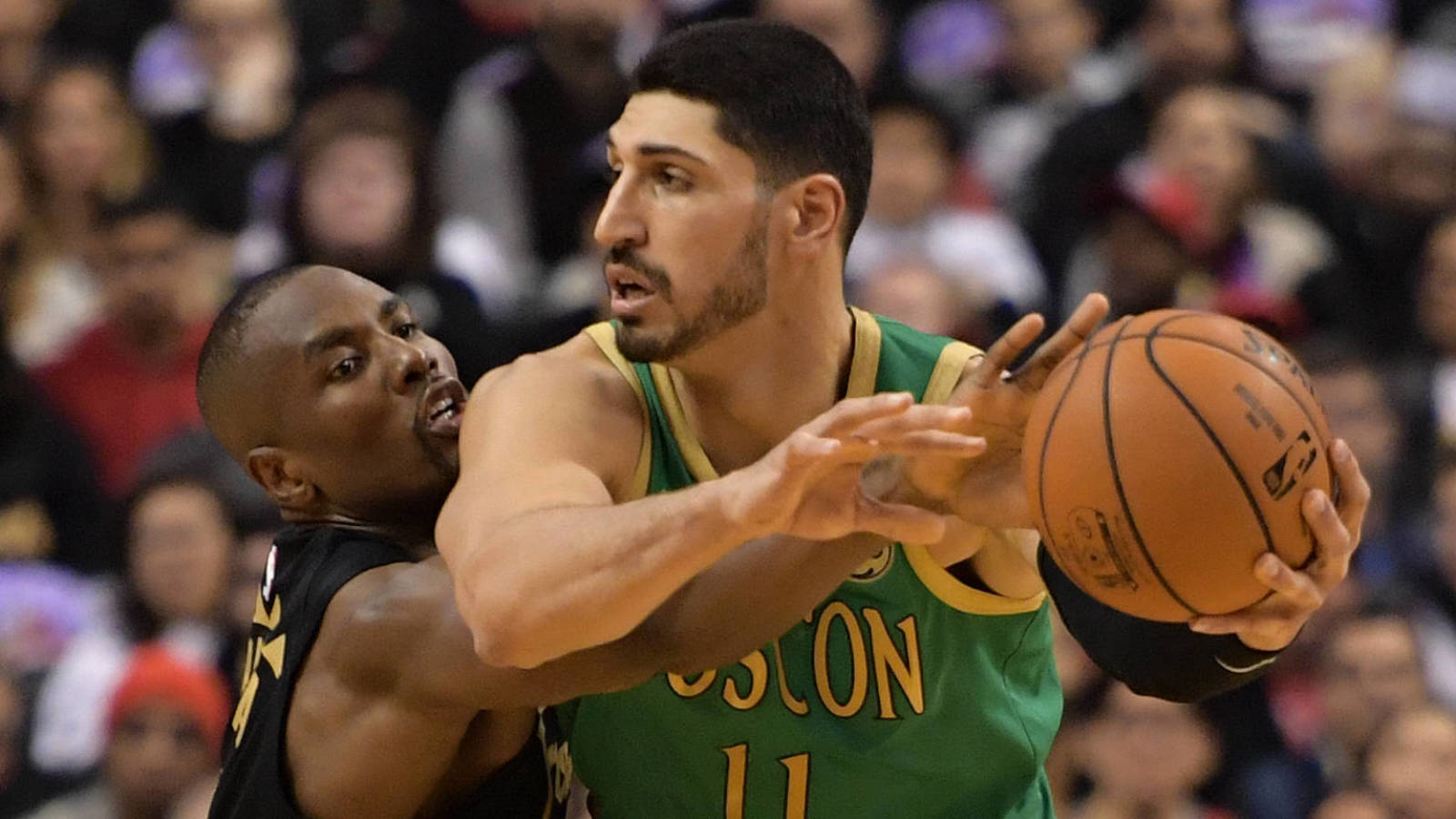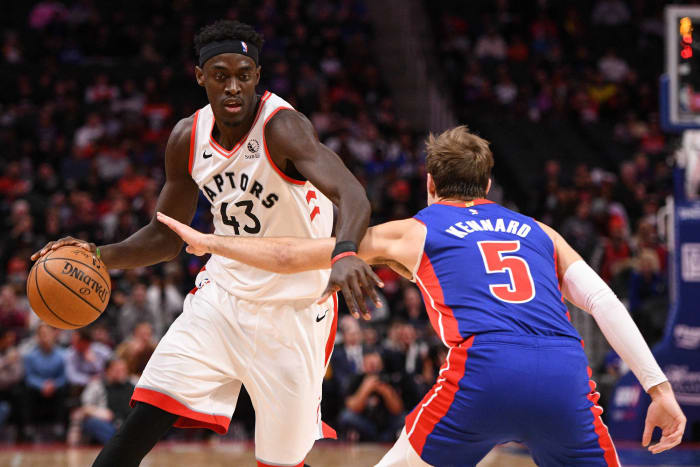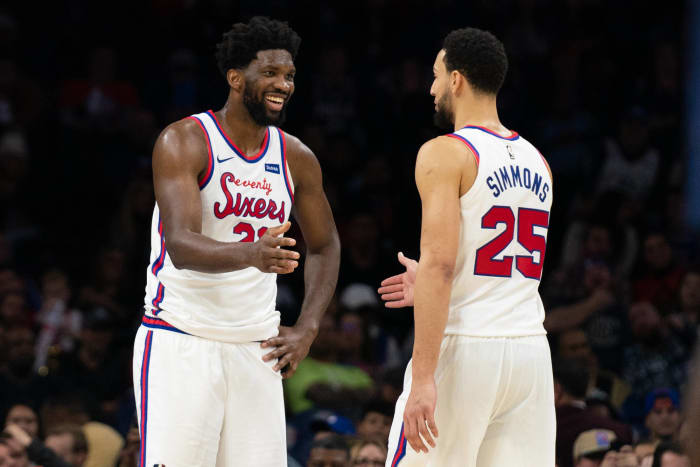
The Big Question facing five Eastern Conference title contenders
As we head into a new year, contenders in each NBA conference are clear. Here's an assessment of the top-tier Eastern Conference teams and the big question facing each in 2020:
(Western Conference contenders)
Milwaukee Bucks (29-5)
BIG QUESTION: Can the Bucks manage the game when Giannis Antetokounmpo is not on the floor?
Milwaukee has the league’s best record, best defense and second-best offense. Its scoring differential of +13.0 is nearly double that of the next-best team (Dallas at +7.9). The Bucks could become one of the most dominant NBA regular-season teams in recent history.
It’s important to remember, however, that championships are won and lost by the finest of margins. Antetokounmpo has been sensational, averaging 30.9 points, 12.9 boards and 5.7 assists in a shade over 31 minutes a game. (He averaged 34.3 minutes last season.) But NBA games are 48 minutes, so there's decent chunk of time when league’s potential MVP sits.
For the Bucks, the next rungs down the shot creation ladder lead you to Eric Bledsoe (15 ppg.) and Khris Middleton (18.7 ppg.). When the former plays with Antetokounmpo, he shoots more 50 percent from the floor, and his stout defense helps the Bucks hold opponents to a paltry 94.5 points per 100 possessions. But when Bledsoe plays without Giannis, things get dicier. The team’s offensive rating drops from 115.3 points per 100 to just 106.4; opponents outscore Bledsoe-led lineups by 3.3 points per 48 minutes.
Minus Giannis, Milwaukee’s offense hardly misses a beat when Middleton is the focal point, dropping from a 113 points per 100 to just 112.8 -- a mark that jibes with the team’s Middleton-centric performance from last season as well. Except this season, the Bucks' defense takes a massive hit without their versatile Greek defender. In those Middleton-only minutes, Milwaukee gives up over seven points per 100 possessions more.
It's not surprising to see a team's performance dip when an all-world player such as Giannis sits. But given the Bucks' aim is to win the NBA title, managing those short stretches in the regular season and playoffs can have massive implications.

Miami Heat (24-8)
BIG QUESTION: Can they be good enough on either end of the floor to make the Finals?
The old adage “defense wins championships” gets tossed around liberally during sports telecasts. But the truth is defense doesn’t win NBA titles as much as being elite on one end of the floor does. It doesn’t matter which end, but boasting a top-five defense OR offense is pretty much a prerequisite for a Finals appearance. Of the 20 teams in the championship round over the past decade, 19 had either a defense or offense ranked among the five best in the NBA.
That doesn’t seem to bode well for the Heat, who are merely pretty good on both ends. The Heat has the league’s eighth-best offense, a shade behind the Clippers in seventh. It’s certainly not a bad place to be, especially when you consider Miami finished 26th in scoring last season.
Over the past decade, top-flight offenses made the Finals with three notable exceptions -- the 2010 Celtics and 2013 and 2014 Spurs. Those teams boasted top-five defenses. Miami’s ability to stop opponents is only slightly above average, 11th of the league’s 30 teams. The Heat is three-tenths of a point per 100 possessions from overtaking the 10th- place Jazz, but nearly two full points behind the ninth-place Pacers. That’s a sizeable gap.
In 2011, the Mavericks made the Finals despite finishing eighth in both offensive and defensive efficiency during the regular season. But that Mavericks squad, which rode some white-hot postseason shooting to its Finals appearance, is the lone exception to the “Top 5 rule" over the past 10 Finals. Can the Heat buck the trend?

Boston Celtics (22-8)
BIG QUESTION: Will the team’s lack of size ultimately doom them?
It’s hard to believe that the NBA used to be ruled by plodding big men who played on the low block. The Warriors, of course, went small en route to their recent titles. Can the Celtics approach Golden State's success with a similar strategy?
Almost lost in the shadows given the league’s other big storylines, Boston has quietly posted the league’s third-best point differential this season. The Celtics accomplished this despite having just one player over 6-foot-8 (Enes Kanter) slotted for regular rotation minutes. Kanter, who averages just 17.5 minutes per game, comes off the bench behind the team’s nominal starting center, 6-foot-8 Daniel Theis. The rest of the minutes are divvied up among the team’s collection of versatile wings, with occasional appearances from another 6-foot-8 “center,” Robert Williams III.
Despite this quirky rotation, Boston is in the top five in offensive and defensive efficiency. And the Celtics have accomplished those feats in ways that seem antithetical to a team that’s fully embracing small ball. Most teams that play small tend to run opponents off the floor. But Boston ranks 24th in pace. You’d expect teams that play the Celtics to have little opposition at the rim. But Boston ranks in the top 10 in limiting shots within six feet of the basket.
The one area Boston is vulnerable, however, is rebounding. Given the Celtics' lack of size, it’s not surprising they rank just 19th in limiting opponents' second chances. And when Kanter isn’t in the game, the Celtics are a bottom-five rebounding team.
Now being a bad rebounding team isn’t necessarily a death knell. A rebound is effectively the ending point of an opponent’s possession, and Boston is still an elite defensive team despite its deficiencies. That doesn’t mean, however, the Celtics are in the clear for 2020.
Kanter, the Celtics' leading rebounder (7.5 rpg.), has typically been a defensive liability throughout his career. How will that play out in the postseason? Could Boston’s lack of size up front lead to an early playoff exit? Or what happens to Boston during the regular season should Kanter get hurt? Also, playing in the East means a potential showdown with Philadelphia 7-footer Joel Embiid, who averages 12.4 boards.

Toronto Raptors (22-11)
BIG QUESTION: Can Pascal Siakam, Fred VanVleet or Kyle Lowry be a primary option on a Finals contender?
Earlier this season, I examined one of the Raptors' key concerns in post-Kawhi Leonard world. No matter how much depth a team stacks up in place of a departed star or how much a coach structures his system to avoid the reliance on a single player, high-level NBA teams need a player who can beat a defense by himself. With Leonard last season, the Raptors had a player who turned isolations into efficient plays. This season, it's playing out differently.
According to Synergy Sports data, 6.9 percent of the Raptors possessions last season qualified as isolations. This season, 6.7 percent have been categorized as such. In other words, the team is still generating just about the same number of one-on-one situations despite the departure of Leonard.
In his absence, Siakam has shouldered more of the burden. Even though we’re just a third of the way through the season, he has already generated more iso’s (128) than he did all of last season (121). And that’s despite missing six games! The Raptors' starting backcourt of Fred VanVleet (43 iso’s this season after 57 in 18-19) and Kyle Lowery (37 iso’s this season despite missing 11 games, 76 in all of 18-19) have also picked up some of the slack.
The problem for Toronto is none of these players can produce like Leonard could beating defenders one-on-one. The Board Man posted over a point per possession on iso’s. This season, Lowry’s mark of 0.892 points per possessions is the best mark of the three Raptors. The ability of the Raptors' core to win one-on-one battles in key moments could determine Toronto's fate in 2020.

Philadelphia 76ers (23-12)
BIG QUESTION: Will the Sixers' offense improve when stars Joel Embiid and Ben Simmons share the floor?
Simmons and Embiid are the undisputed cornerstones of the franchise, but they don't play well together, potentially a huge issue.
As a team, the Sixers score 109.1 points per 100 possessions. In the 565 minutes Embiid and Simmons have shared the floor, that number drops to 105.8. This was a non-issue last season for Philadelphia, as Simmons and Embiid did just fine as a duo. Yet with the big roster turnover this season (exit of Jimmy Butler, signing of Al Horford), things are different, and the small sample size could be a sign of a season-long problem.
Simmons' reluctance to shoot threes is well documented, but there are also stylistic clashes between the two players. Simmons thrives in the open court, and Embiid does his best work in half court. Tactical tweaks can mitigate this clash of styles but not make them go away entirely.
Philadelphia is still adjusting to new faces -- basically the entire bench is new -- so perhaps this issue will smooth out over time.
More must-reads:
- Picking the Eastern Conference starters for the All-Star Game
- Khris Middleton makes his new five-year, $178M contract a wise investment
- The 'Every NBA All-Star trio from the same team' quiz
Breaking News
Customize Your Newsletter
 +
+
Get the latest news and rumors, customized to your favorite sports and teams. Emailed daily. Always free!

